Does a .410 with TSS beat a 10-gauge with lead? Is the 28-gauge all that it's cracked up to be? Is a 20-gauge really the new 12? We put those questions and more to the test
Turkey hunters love a good debate, especially when it involves shotguns and loads.
Many discussions involve numbers, such as the number of pellets a hunter’s shotgun places in the head and spine of a gobbler. Others just quote anecdotal evidence, with statements like, “I’ve used that gun for 30 years and always filled my tags.”
But what happens when that chatter sparks a serious quest for real-world information? It would likely look something like this video: “Which Gauge is Best for Turkey,” or as it was informally known, the great turkey gauge and gun comparison, held March 12 near Realtree’s headquarters in Georgia.
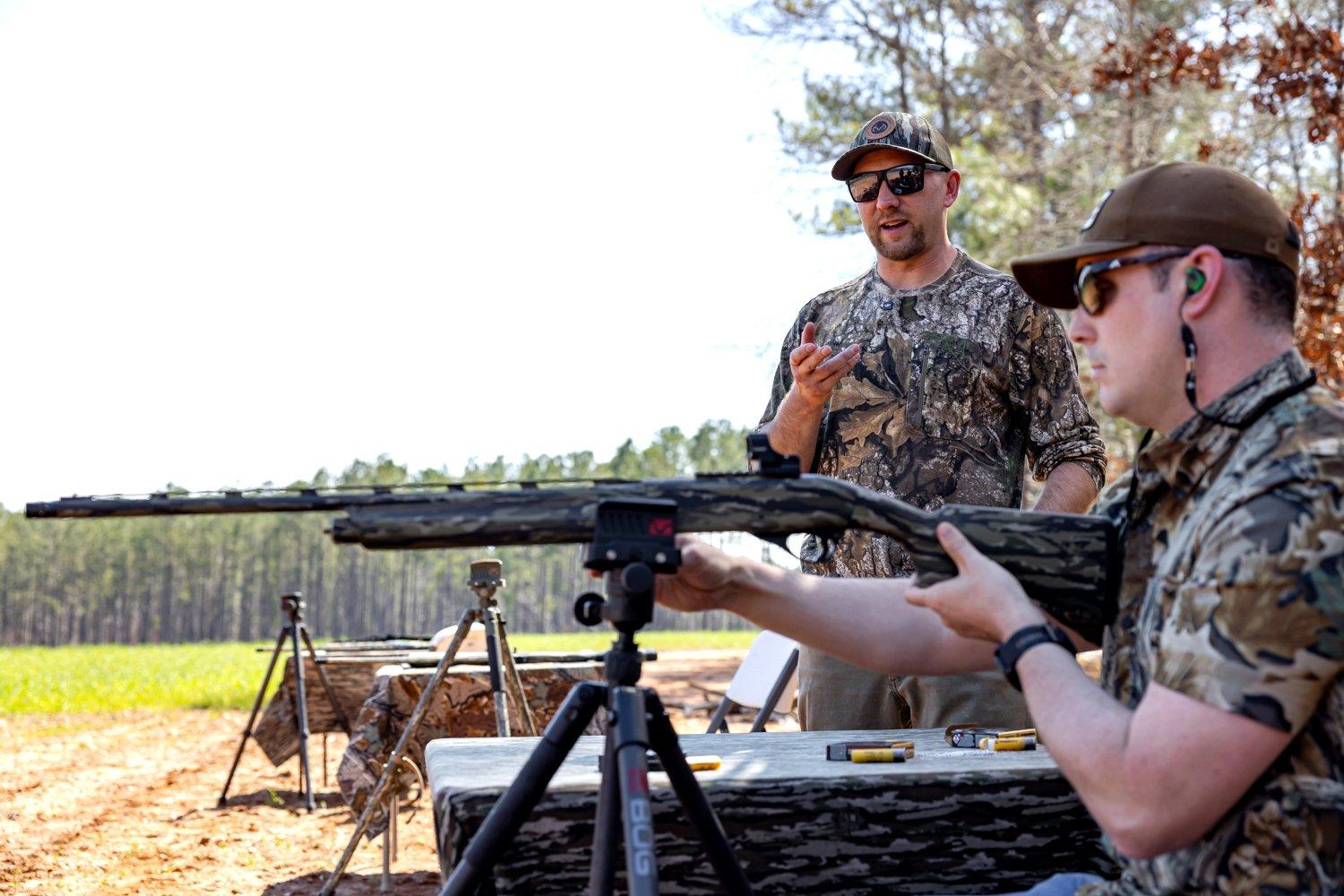
Tyler Jordan patterned Federal No. 7 TSS turkey loads through his Franchi Affinity 3. Photo by Realtree.
And as the test wore on, shooters and onlookers began to get a feel for the capabilities and limitations of each gun, choke and load combo. In fact, there were even a few surprises.
“What surprised me most was the overall consistency between all the various gauges,” said Realtree’s Tyler Jordan. “I think it shows how far chokes and shot loads have come over the years, especially at 40 and 50 yards. Even at the longer distances, the sub-gauges were still very effective.”
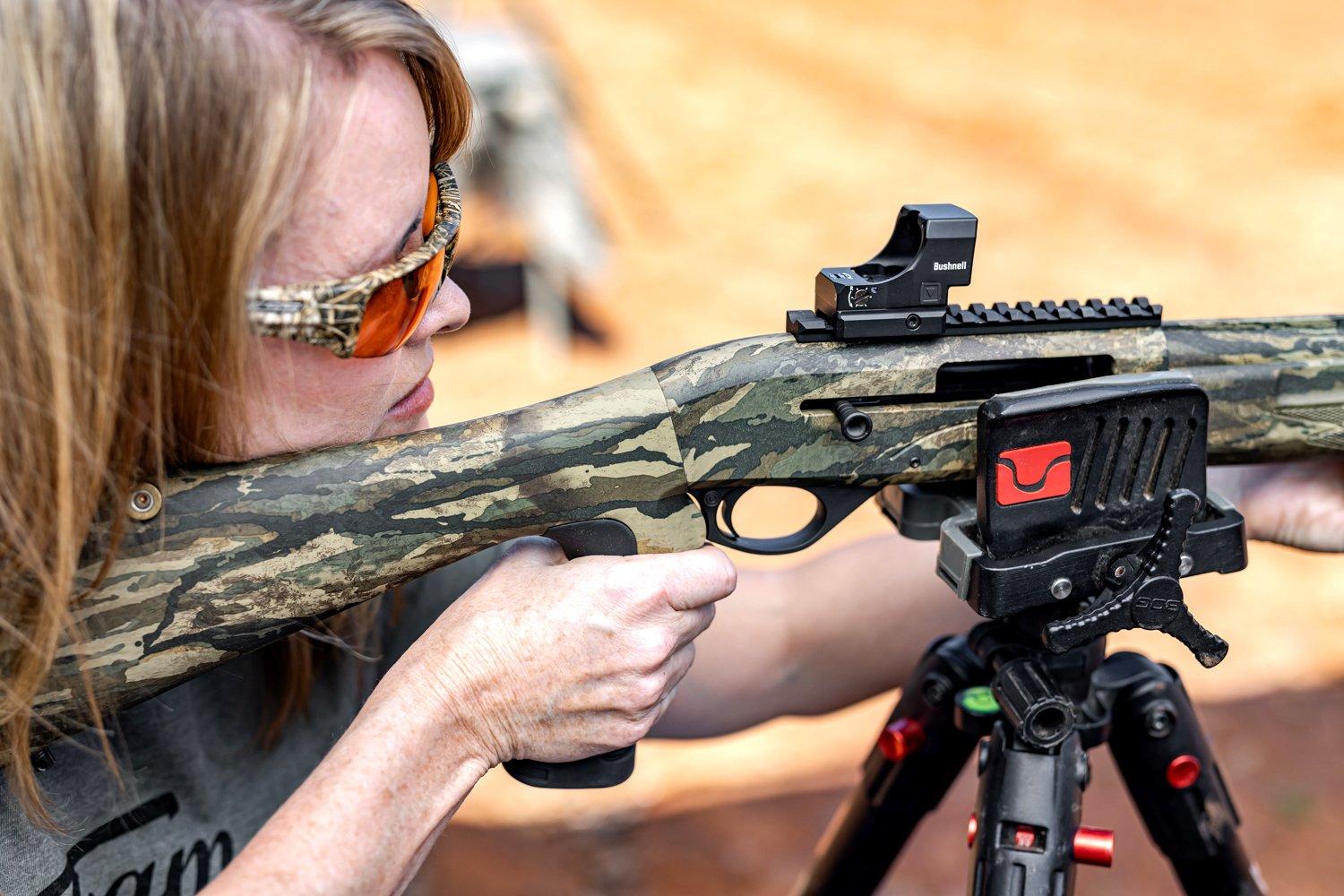
Stephanie Mallory shot the Mossberg International SA-28 Tactical Turkey 28-gauge, and it performed well throughout the test. Photo by Realtree.
THE TEST
Here’s the premise: Four experienced turkey hunters shot five guns in five gauges — .410, 28, 20, 12 and 10 — at targets placed at 20, 30, 40 and 50 yards. All of the guns are actual turkey shotguns, owned and used by folks at Realtree. They included a CVA Scout .410-bore single-shot with a 22-inch barrel; a Mossberg International SA-28 Tactical Turkey 28-gauge with a 22-inch barrel; a Franchi Affinity 3 20-gauge; a Beretta A300 12-gauge; and a Browning Gold 10-gauge.
All guns were fitted with Kick’s choke tubes and Bushnell red-dot sights, and fired Federal ammo. Shot sizes used included No. 9 TSS in the smaller sub-gauges, No. 7 TSS in the 20- and 12-gauge, and traditional No. 5 copper-plated lead in the 10-gauge (a 10-gauge TSS load was unavailable at the time of the test, but the results from that gun with old-school lead loads were pretty eye-opening).
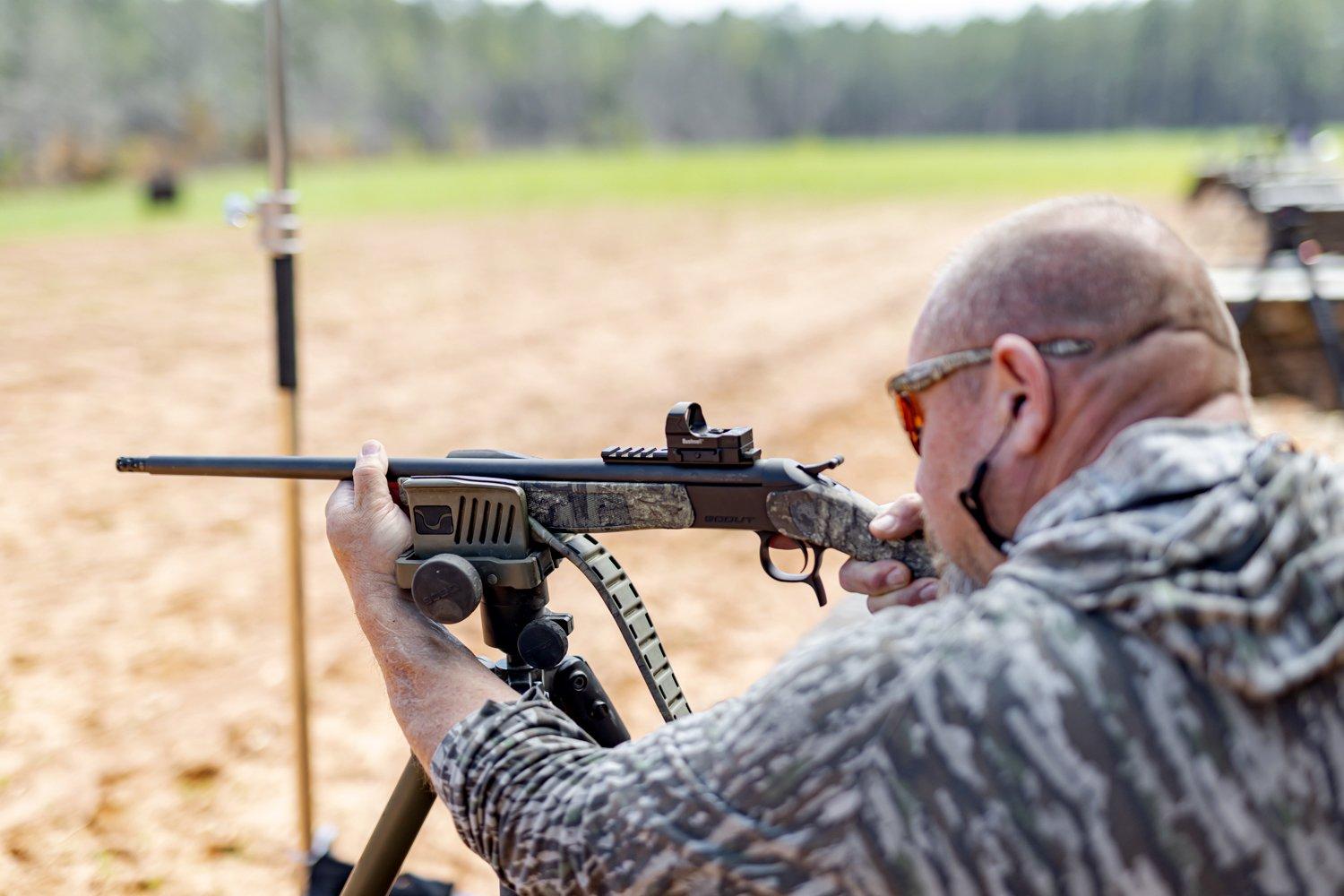
Realtree’s Michael Pendley manned the CVA Scout .410 during the gauge comparison. Photo by Realtree.
Shooters first fired at 20-yard targets, which obviously produced sensational pellet counts, but also let shooters become accustomed to each gun and load, and check the combination’s point of impact. Afterward, staffers collected the targets to count the number of pellet strikes within a 10-inch circle. That cycle was then repeated at 30, 40, and 50 yards (measured with a rangefinder), and the results for each round were then reviewed to show how the guns performed and compared to each other. After each round, some shooters fine-tuned the point of aim on their sights to maximize patterning results.
Don’t Miss: Sweet New Turkey Gear for 2025
THE RESULTS
Without spoiling the results in the video, the test progressed in a somewhat predictable fashion. As mentioned, the results for all gauges at 20 yards produced eye-popping close-range patterns, with the booming 10-gauge prompting oohs and ahs from onlookers.
At 30 steps, patterns opened up and really let folks see the turkey killing potential of each load. All gauges performed well, with the little 28 really producing a great pattern. At 40 yards, patterns opened a bit more but still looked sure-kill deadly. The 12-gauge shot a bit high at 30 and 40, which limited its pellet count in the predetermined 10-inch circle. To compensate, staffers viewed the backs of those targets, found the center of impact, and then drew another 10-inch circle around that to get a more accurate pellet count and better reveal the gun and load’s performance. And at 50 steps, as you might expect, some of the patterns opened quite a bit. Many were still deadly, but it drove home the point that it’s always a good idea to work a turkey to within 40 steps before taking the shot.
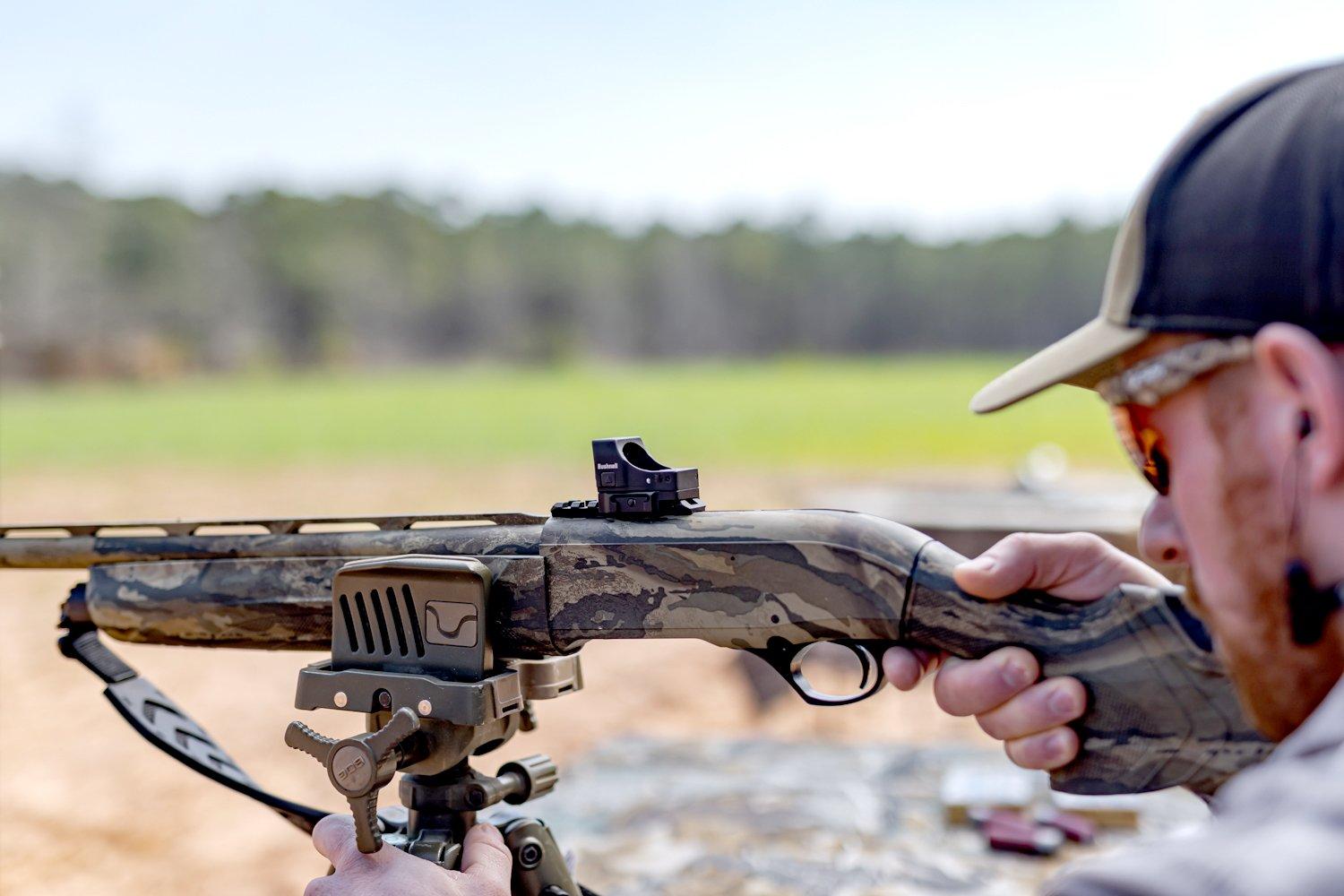
Realtree editorial staffer Darron McDougal put the Beretta A300 12-gauge through its paces during the test. Photo by Realtree.
TAKEAWAYS
Perhaps the biggest overall lesson from the test was that today’s turkey guns, chokes and loads are extremely efficient turkey killers. All of the combos — even the vintage 10-gauge with heavy lead loads — performed at a level that was unheard of a couple of decades ago. In particular, the test validated the use of sub-gauge guns. The .410, 28-, and 20-gauge are all extremely lightweight and easy to carry, but also produce substantially less recoil than the 12- and 10-gauge guns. The .410, for example, only produces about 14 foot-pounds of recoil energy. A 12-gauge (which actually recoils more than the 10 because the gun is much lighter) produces 53 foot-pounds. The 20- and 28-gauge guns both throw a similar payload and recoil somewhere in the middle, at around 35 foot-pounds. But as you’ll see in the video, some of the little guns didn’t give up much to the big boomers in terms of pattern performance.
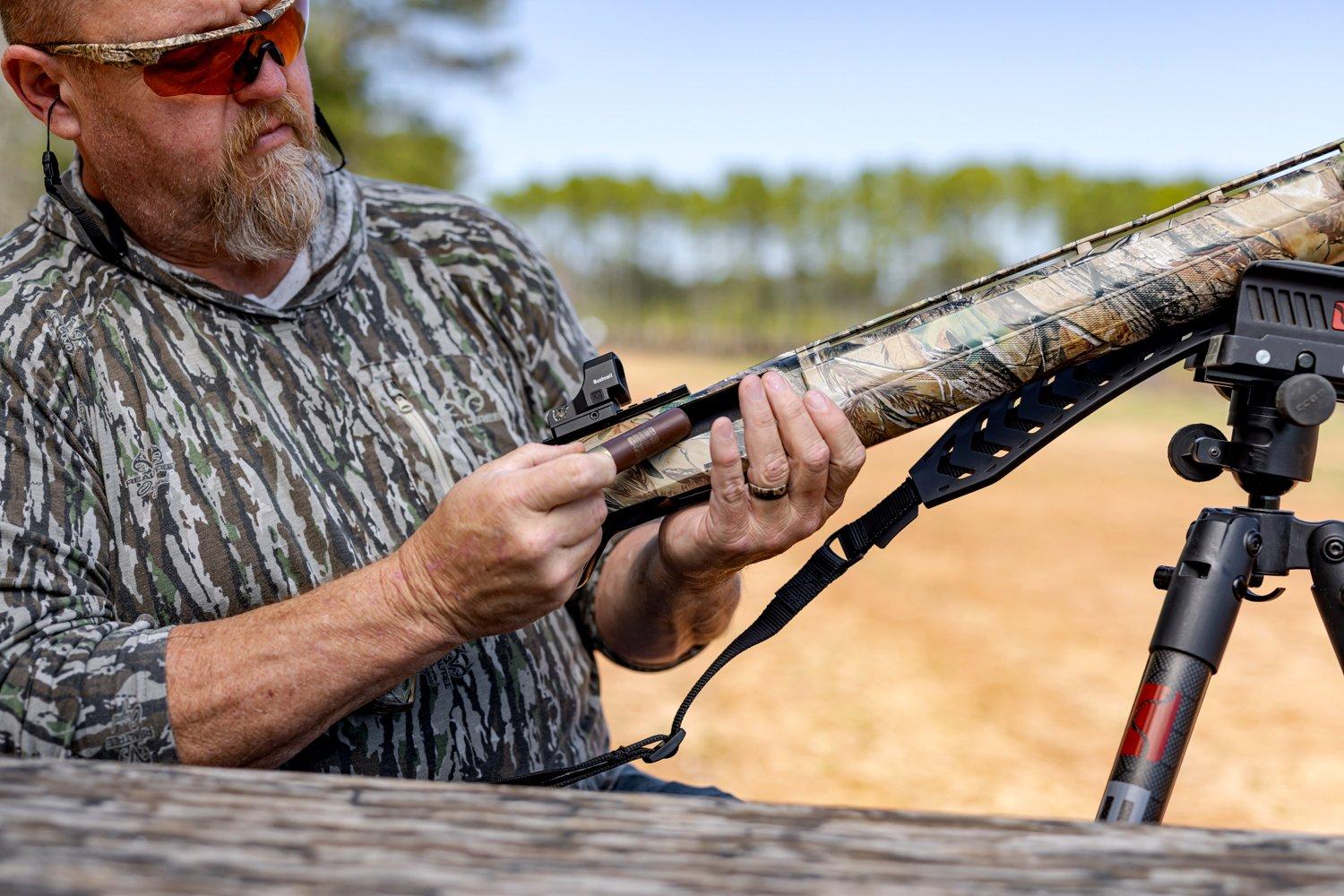
Everyone was intrigued to see results from the Browning Gold 10-gauge, and it didn’t disappoint. Photo by Realtree.
Further, the event provided a great example of why such tests and comparisons are so important. Certainly, every gun, choke, sight and load used during the test has the potential to be a sure-enough shooter. But each of those — every turkey gun and load, actually — must be thoroughly tested and probably tweaked before the game gets real. Many factors can affect the performance of a turkey gun combo, including shot size, choke constriction, the person shooting the gun, and even the make and model of each gun, choke, and shell. You can only fine-tune a combination’s performance through lots of range time, popped primers, critical examination of targets and experimentation with various loads and chokes.
Check Out Our Latest Camo Pattern: Realtree APX
Then, as you’ll see with Realtree’s great turkey gauge and gun comparison, that experience provides a clear picture of the best combination of elements, which in turn produces confidence when that gobbler steps into range and you focus on that sight at the moment of truth.












